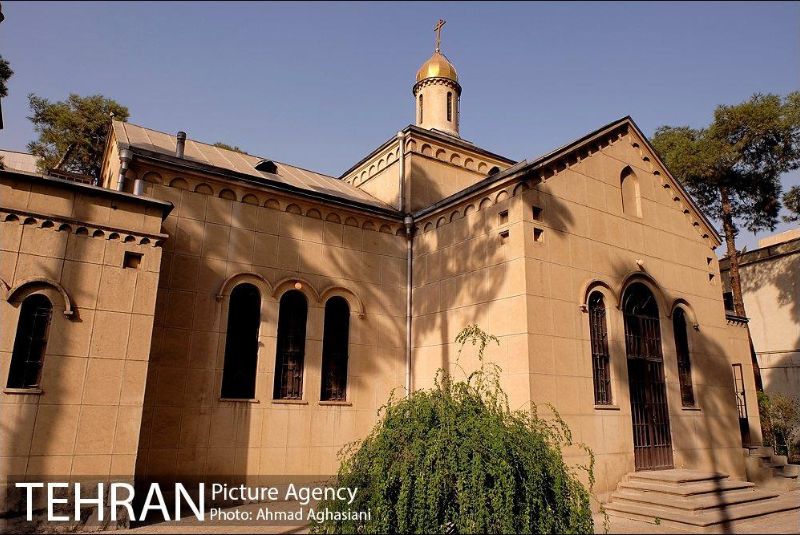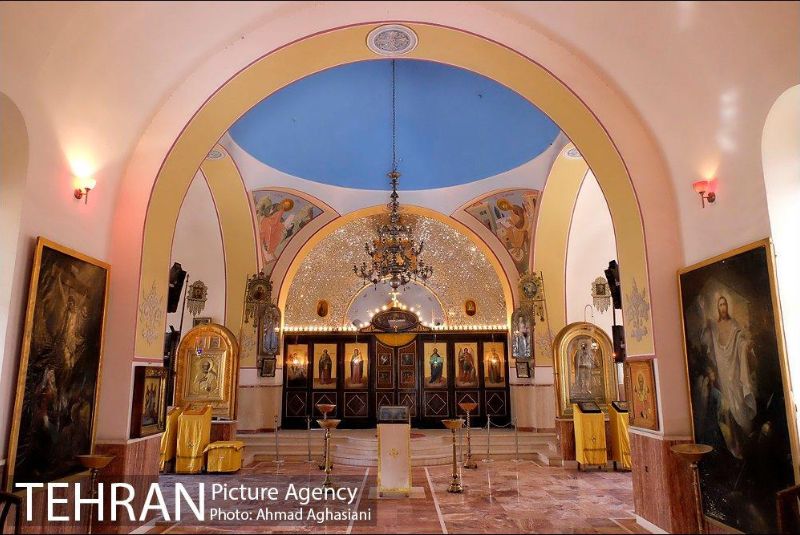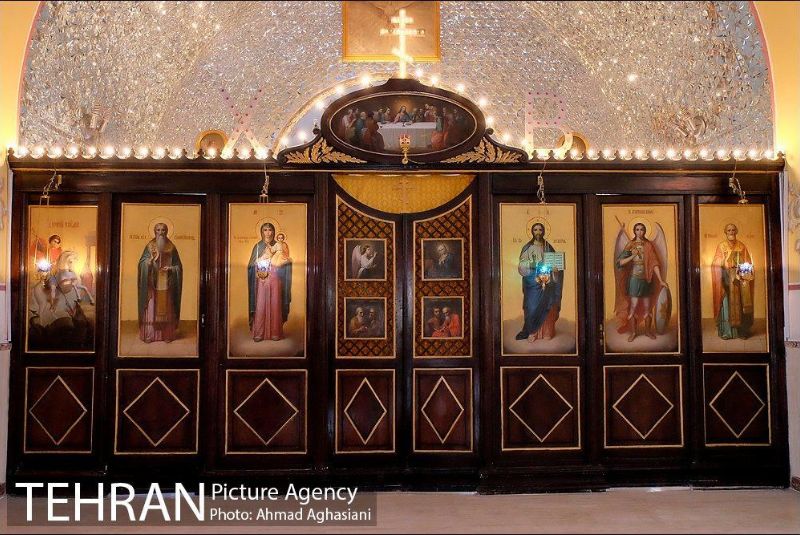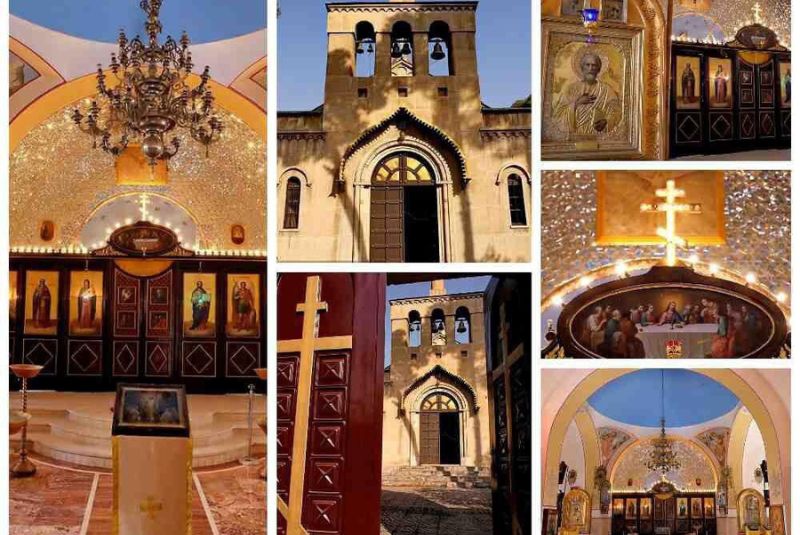St. Nicholas Church | Tehran's Orthodox Heritage
St. Nicholas Church stands as a testament to Tehran's rich culture and religious diversity.
Established during the tumultuous period of Russian immigration in the mid-20th century, this church holds a significant place in the city's history. Originally constructed by Russian immigrants fleeing Stalin's regime, it served as a sanctuary for Orthodox Christians seeking solace and community in a foreign land.
Beyond its religious significance, St. Nicholas Church has played a vital role in preserving Tehran's cultural heritage. Its architectural style, influenced by Russian traditions, adds a unique dimension to the city's skyline. Moreover, the church serves as a symbol of tolerance and diversity, welcoming believers of all backgrounds to gather in worship and reflection.
In a city where different faiths and traditions converge, St. Nicholas Church stands as a beacon of unity, reminding us of the importance of mutual respect and understanding in fostering a harmonious society.
History and Origin of St. Nicholas Church

Establishment during the Russian Immigration Wave
St. Nicholas Church in Tehran traces its roots back to a pivotal period in history—the wave of Russian immigration in the mid-20th century. As political turmoil engulfed Russia, many fled their homeland, seeking refuge in neighboring countries. Iran, with its relative stability at the time, became a sanctuary for numerous Russian immigrants, including a significant number who settled in Tehran.
Amidst their new surroundings, these immigrants yearned to uphold their religious traditions and establish a sense of community. It was during this period of displacement and uncertainty that the idea of building a church took shape. Driven by a shared faith and a desire to preserve their cultural identity, the Russian immigrants pooled their resources to construct what would become St. Nicholas Church—a spiritual haven amidst the bustling streets of Tehran.
Architectural Details and Significance
The architectural design of St. Nicholas Church reflects the rich heritage of Russian Orthodox tradition. Designed by the renowned Russian architect Nikolay Markov, who had previously left his mark on Tehran's skyline with several prominent structures, including schools and government buildings, the church boasts a distinctive style characterized by ornate domes, intricate arches, and vibrant paintings adorning its interior.
Tehran St. Nicholas Church Architecture showcases elements reminiscent of traditional Russian churches, such as colored windows and stained glass, evoking a sense of reverence and awe among visitors. Each detail serves as a testament to the meticulous craftsmanship and unwavering devotion of those who built it, ensuring that the church stands not only as a place of worship but also as a masterpiece of architectural beauty.
| Related: Persian Architecture
Naming after Tsar Nicholas II
The church's name, St. Nicholas, pays homage to Tsar Nicholas II, the last ruler of the Russian Empire. Tsar Nicholas II and his family met a tragic fate at the hands of the Bolsheviks during the Russian Revolution. In honoring his memory, the Russian immigrants in Tehran sought to commemorate his legacy and the suffering endured by their fellow countrymen during those tumultuous times.
Role of the Church in Preserving Russian Heritage

St. Nicholas Church serves as a vital link to the Russian heritage of its congregants. Beyond its religious functions, the church plays a pivotal role in preserving and promoting Russian culture and traditions in Tehran. Through religious services, cultural events, and educational programs, it serves as a beacon of Russian identity, fostering a sense of belonging and pride among the community.
In a city as diverse as Tehran, the presence of St. Nicholas Church not only enriches the religious landscape but also serves as a testament to the resilience and enduring spirit of its people.
| Related: Famous Churches in Iran - From Vank to Saint Thaddeus
Architecture and Design of St. Nicholas Church

Influence of Russian Architectural Style
St. Nicholas Church in Tehran stands as a striking example of Russian architectural influence amidst the bustling streets of the Iranian capital. Designed by the esteemed Russian architect Nikolay Markov, the church reflects the distinct characteristics of traditional Russian Orthodox architecture. From its towering domes to its intricate façade adorned with ornate details, every aspect of the church's design pays homage to its Russian heritage.
Unique Features
One of the most captivating aspects of St. Nicholas Church is its exquisite interior, adorned with a wealth of artistic treasures. As visitors step inside, they are greeted by a kaleidoscope of colors streaming through stained glass windows, casting a warm glow upon the sacred space. These vibrant windows, meticulously crafted with intricate designs and rich hues, serve as a visual feast for the senses, transporting worshippers to a realm of spiritual transcendence.
In addition to its colorful windows, St. Nicholas Church boasts a collection of breathtaking paintings adorning its walls and ceilings. Each stroke of the brush tells a story of faith and devotion, capturing the essence of Russian Orthodox tradition in vivid detail. From iconic religious scenes to portraits of saints and martyrs, these paintings serve as a visual testament to the enduring legacy of the church and its role in preserving Russian heritage.
| Suggestion: Vank Cathedral - Persian & Armenian Cultural Masterpiece
Connection to Other Russian-Built Structures in Tehran
St. Nicholas Church in Tehran is not merely an isolated architectural marvel but rather part of a larger network of Russian-built structures that dot the city's landscape. Nikolay Markov, the esteemed architect behind the church, left an indelible mark on Tehran's urban fabric with his masterful designs. Among his notable creations are the Anoushirvan Dadgar High School, which stands as a testament to his commitment to educational excellence. Additionally, Markov's influence can be seen in the imposing façade of the Qasr Prison, a structure that blends functionality with architectural grandeur.
Furthermore, Markov's architectural prowess extended to civic institutions, including the Tehran Municipality building, which serves as a symbol of governance and civic pride. The Zandark School, with its elegant design and spacious classrooms, reflects Markov's dedication to providing quality education to Tehran's youth. Moreover, the Post Office, a hub of communication and connectivity, bears witness to Markov's vision of modernity and progress.
Each of these structures, imbued with the distinctive characteristics of Russian architectural style, serves as a testament to Markov's enduring legacy and his contributions to Tehran's cultural landscape. From educational institutions to civic buildings, Markov's designs continue to shape the city's identity, offering glimpses into its rich history and architectural heritage. In this context, St. Nicholas Church stands not only as a place of worship but also as a symbol of Tehran's diverse cultural tapestry and the lasting impact of its Russian immigrant community.
Community Impact and Services

Religious and Cultural Center for Orthodox Christians
St. Nicholas Church in Tehran played a pivotal role in the past as a religious and cultural center for Orthodox Christians. It provided a place for worship, spiritual guidance, and community fellowship. Regular religious services, including liturgies and special ceremonies, were conducted, offering believers a space to connect with their faith and traditions. Moreover, the church organized cultural events and educational programs that celebrated the rich heritage of the Orthodox faith, fostering a sense of unity and pride among its members.
| Read more: Top 14 Religious Tourist Attractions in Iran
Charitable Activities
Adjacent to St. Nicholas Church was Iran's first nursing home, which later transformed into a charity center. This facility provided essential care and support to elderly Russian immigrants and expanded its services to individuals of diverse religious backgrounds. The charity center engaged in various charitable activities, such as food distribution, clothing donations, and medical assistance, demonstrating a commitment to serving the broader community and addressing societal needs.
Importance of the Church in Fostering Community Cohesion
St. Nicholas Church played a crucial role in fostering community cohesion and solidarity among its members and the wider society. By providing a welcoming and inclusive space for worship and fellowship, the church facilitated meaningful connections and friendships. Moreover, through its charitable initiatives and outreach efforts, St. Nicholas Church served as a catalyst for positive social change and unity. Whether through interfaith dialogue, cultural exchange programs, or collaborative community projects, the church promoted a sense of belonging and mutual respect, strengthening the social fabric of Tehran in the past.
| Also read about: Qara Kelisa - The Armenian Monastic Ensembles of Iran
St. Nicholas Church Present Status

Current Status of the Church
The current status of St. Nicholas Church in Tehran reflects both its historical significance and its challenges in the present day. While the church remains a symbol of religious and cultural heritage, its activities have decreased over time, particularly with the decline in the number of Orthodox Christians in Iran. In recent years, the church has faced periods of closure, and its religious services are not as frequent as they once were. However, despite these challenges, efforts are underway to preserve the church and its legacy for future generations.
Efforts for Recognition as a National Monument
Recognizing the importance of St. Nicholas Church in Tehran's cultural landscape, there are ongoing efforts to secure its recognition as a national monument. Advocates for the church's preservation are working to highlight its architectural significance and its role in preserving Russian heritage in Iran. By seeking national monument status, supporters aim to ensure that the church receives the protection and resources needed to safeguard its structural integrity and historical value for years to come.
| Suggestion: How Iranians Celebrate Christmas Eve?
Tehran St. Nicholas Church Location
St. Nicholas Church is situated in a historic area of Tehran, serving as a landmark in the city's cultural and architectural landscape. Located in Atarod Alley, in close proximity to the former United States Embassy, the church occupies a central position within the community. Its location in the heart of Tehran underscores its importance as a place of worship and community gathering for Orthodox Christians and as a site of cultural significance for all residents of the city.
| Suggestion: 30 Tir Street - The Crossroad of Religious in Tehran
Tehran St. Nicholas Church Significance
The significance of St. Nicholas Church in Tehran extends beyond its role as a place of worship for Orthodox Christians. As one of the oldest churches in the city, it represents a tangible link to Iran's diverse religious heritage. The church's architectural beauty and historical importance contribute to its cultural significance, drawing visitors from near and far to admire its unique features and learn about its rich history. Moreover, St. Nicholas Church serves as a reminder of the enduring legacy of the Russian immigrant community in Tehran and their contributions to the city's cultural tapestry.
Finally!
St. Nicholas Church in Tehran holds a significant place in the city's cultural and religious landscape. From its origins as a refuge for Russian immigrants to its role as a symbol of Orthodox heritage, the church embodies centuries of history and tradition. Its architectural beauty, cultural significance, and charitable endeavors have made it a cherished landmark in Tehran.
We invite readers to explore and appreciate Tehran's diverse heritage, of which St. Nicholas Church is a shining example. As you wander through the city's streets, take a moment to visit this historic church and marvel at its architectural splendor. Discover the stories of the Russian immigrants who sought refuge within its walls and learn about the enduring legacy they left behind. By embracing Tehran's rich tapestry of cultures and traditions, we can gain a deeper understanding of the city's past and present, and forge connections that transcend borders and boundaries. Join us in celebrating the vibrant mosaic of Tehran's heritage and the treasures it holds for generations to come.
Share your story!
Comment below and let us know about your Experience.
Your story inspires others!


Comment
Leave a Comment